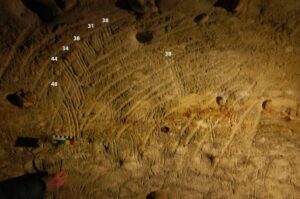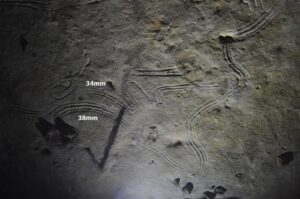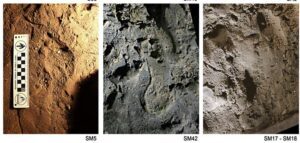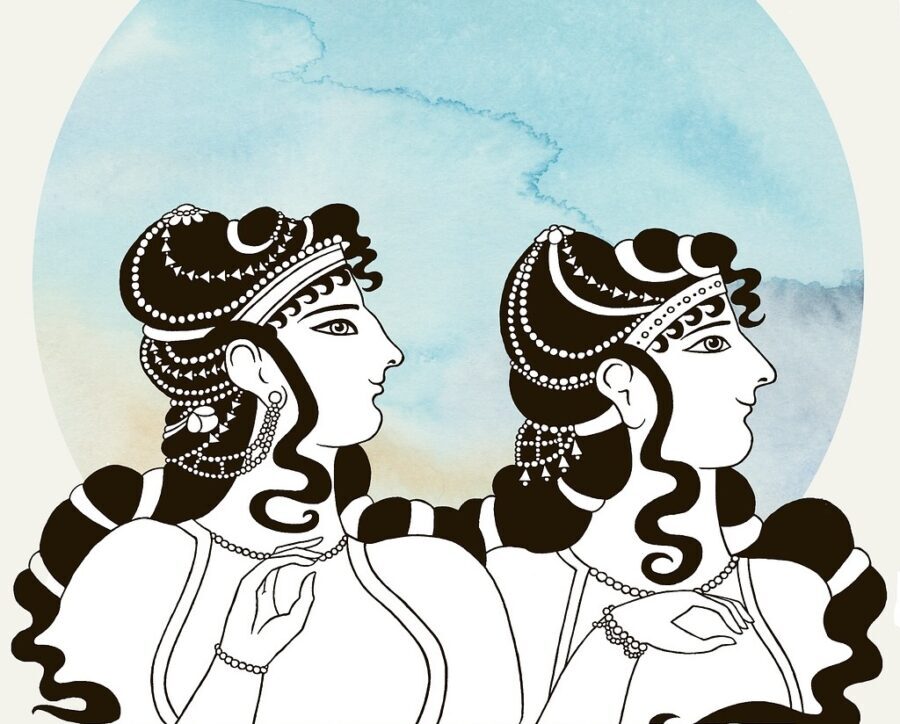
Tel-Aviv University—A team of Tel Aviv University researchers from the field of prehistoric archaeology has proposed an innovative hypothesis regarding an intriguing question: Why did ancient humans bring their young children to cave painting sites, deep underground — through dark, meandering, hazardous passages? The researchers explain: “Next to many cave paintings, there is clear evidence of the presence of children as young as two years old. So far, most hypotheses have focused on the educational aspect — learning the community’s traditions and customs. However, we believe that children also played a unique cultural role in these caves: Young children were credited with special qualities in the spiritual world, enabling them to communicate with entities from the beyond – which were believed to be accessible from the depths of the cave.”
The study was conducted by Dr. Ella Assaf, Dr. Yafit Kedar, and Prof. Ran Barkai from the Jacob M. Alkow Department of Archaeology and Ancient Near Eastern Cultures at Tel Aviv University. The paper was published in the journal Arts from MDPI.
Dr. Assaf explains: “Cave art created by early humans is a fascinating phenomenon that intrigues many researchers. To date, around 400 caves containing cave art have been discovered, mainly in France and Spain, with the artwork dated between 40,000 and 12,000 years ago. There is solid evidence of children’s participation in the art work — handprints and finger paintings made by children aged two to twelve. In addition, footprints and handprints of children have been found in some caves, alongside those of adults. This naturally raises the question: Why were the children there? Why were very young children taken on exhausting and hazardous journeys deep into the dark, meandering caves with low oxygen levels — crawling through crevices, descending shafts, and climbing rocks to reach their destination?
Dr. Kedar elaborates: “Despite extensive research on cave art, few studies have focused on the presence of children. The prevailing hypothesis is that their participation served an educational purpose — passing down knowledge, traditions, and customs to the next generation. In our study, we argue that children’s involvement had an additional meaning: In fact, they played an important, unique role of their own — direct communication with entities residing in the depths of the earth and otherworldly realms. This study follows our previous works, in which we presented cave art works as expressions of cosmological approaches, with emphasis on relationships between humans and various entities.”
Dr. Assaf adds: “Based on extensive studies about children in indigenous societies, along with new insights into rituals performed in caves with cave paintings, a new understanding is emerging regarding the role of children in the creation of cave art. By integrating data from these research fields, we were able, for the first time, to propose a novel and original explanation for the inclusion of children in creating cave paintings: The world of childhood differs from that of adults, and children possess a range of unique mental and cognitive traits. For this reason, indigenous cultures worldwide, throughout history and prehistory, have viewed children as ‘active agents’ — mediators between this world and the entities inhabiting the natural world, the underworld, and the cosmos as a whole. In this way, children made a vital contribution to their communities – hunter-gatherers who lived in nature and sought to maintain continuous, respectful relationships with various entities: animals and plants that served as food sources, stones used for toolmaking, ancestral spirits, and more.”
Prof. Barkai: “Many of these societies regarded caves as gateways to the underworld – where, through shamanic rituals, they could communicate with cosmic entities and inhabitants of the underworld, to resolve existential problems. In this context, young children were perceived as liminal beings — belonging to both the realm they had left just recently (before birth) and the world they currently inhabit. Thus, small children were considered particularly suited to bridging the gap between the worlds and delivering messages to non-human entities. In this paper, we connect these insights and propose that children joined adults on journeys into the depths of caves and participated in painting and rituals as part of their role in the community—as ideal mediators with entities from the beyond.”
__________________________

Finger paintings made by children in Rouffignac Cave, 14,000 to 20,000 years ago. Dr. Van Gelder
__________________________

Finger paintings made by children in Rouffignac Cave, 14,000 to 20,000 years ago. Dr. Van Gelder
__________________________

Children’s footprints from Basura Cave, 14,000 years ago. Prof. Marco Romano – Romano et al. 2019
__________________________
article link:
https://www.mdpi.com/2076-0752/14/2/27
__________________________
Advertisement

EXPLORE THE ANCIENT ETRUSCANS IN PERSON!
Experience a unique, up-close-and-personal hike among ancient hilltop towns in central Italy. You will walk the sensational countryside of the regions of Umbria and Tuscany, soaking in important sites attesting to the advanced Etruscan civilization, forerunners of the ancient Romans; imposing architectural and cultural remains of Medieval Italy; local food and drink; and perhaps best of all — spectacular scenic views! Join us in this collaborative event for the trip of a lifetime!



